See at production company Oblomovies http://www.oblomovies.com
Tag: industry engagement
Engagement related to professional activities, industry, companies, social, medical, education and entertainment related interest groups, application and commercialisation aspects of the research high-lighted
EEVR #21 Community meeting @SuperNova Kino Dec 15
TIME Dec 15, Noon
LOCATION SuperNova Kino, room 406, 4th floor, Narva mnt 27

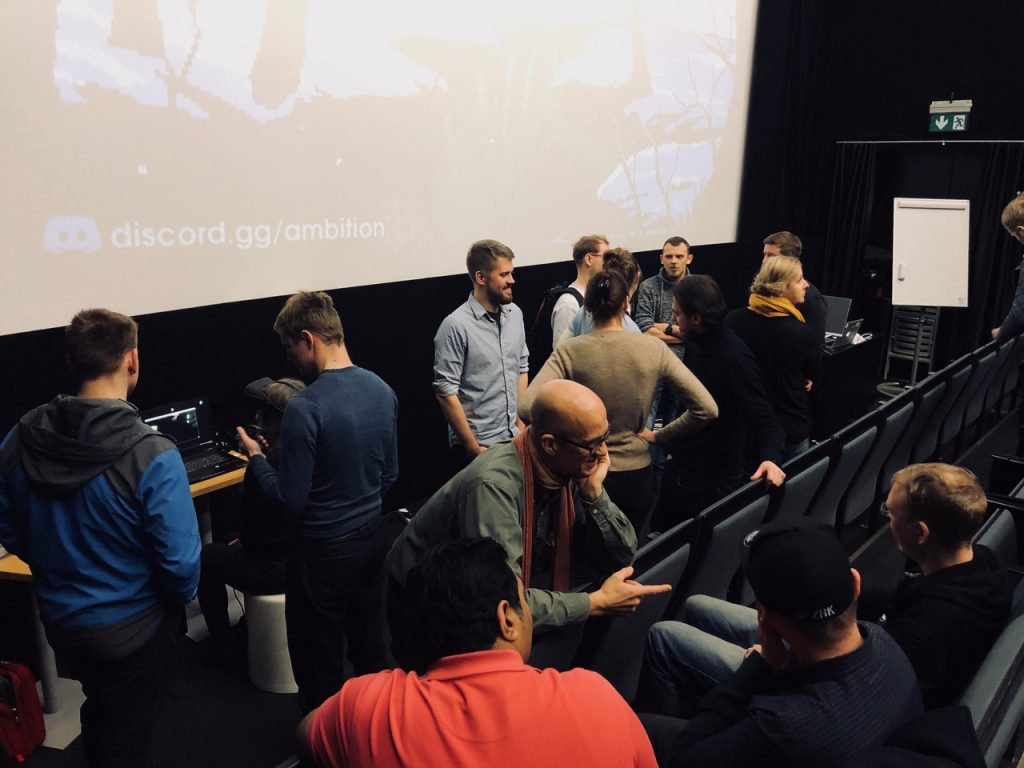
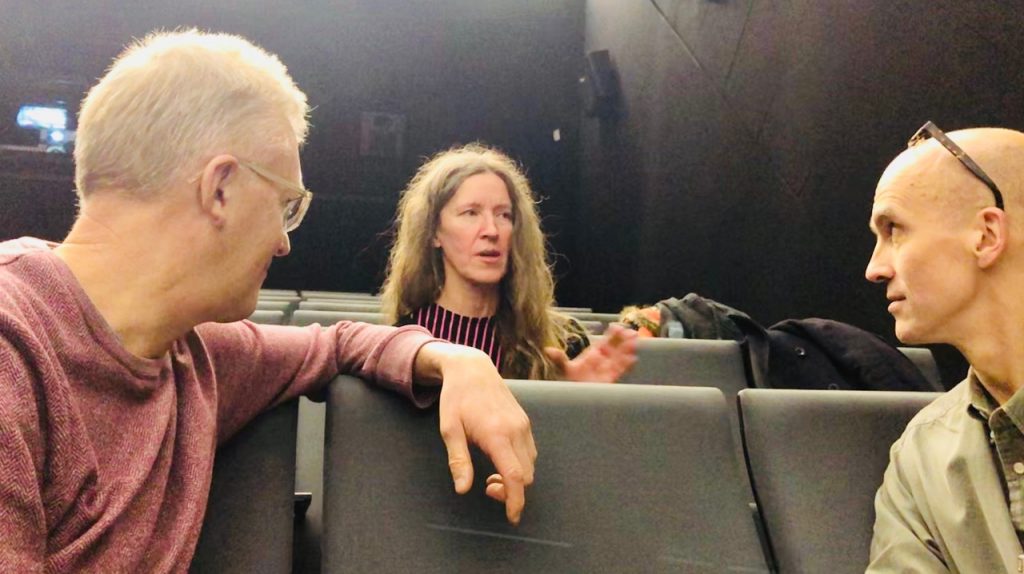
An inspiring EEVR community event organised by MEDIT, including presentations, vivid discussions, technical and artistic demos with highlights by visiting Finnish media artist Hanna Haaslahti (middle) and producer Marko Tandefelt (right).
Announcement by Madis Vasser:
EEVR #21 will once again find itself in familiar territory on the fourth floor of the BFM school in Tallinn, but this time around our host is MEDIT – TLU Center of Excellence in Media Innovation and Digital Culture. We’ll be mixing film, photogrammetry, and some very interesting hardware. Everyone interested in VR/AR are very welcome! The event is free, but do click the attend button early if you plan to show up! Go to FB.
On the schedule:
* Hanna Haaslahti (http://www.hannahaaslahti.net/) – some cool photogrammetry projects
* Madis Krisman & Johannes Kruusma (Avar.ee) – some more cool photogrammetry projects
* Rein Zobel (MaruVR.ee) – VR Days 2018 recap etc
Demos:
* State of Darkness VR – Enactive Virtuality Research Group
* Magic Leap (curtesy of https://www.operose.io/)
* “Hands-on” with some prototype hardware (top secret)
Highlighting:
CAPTURED
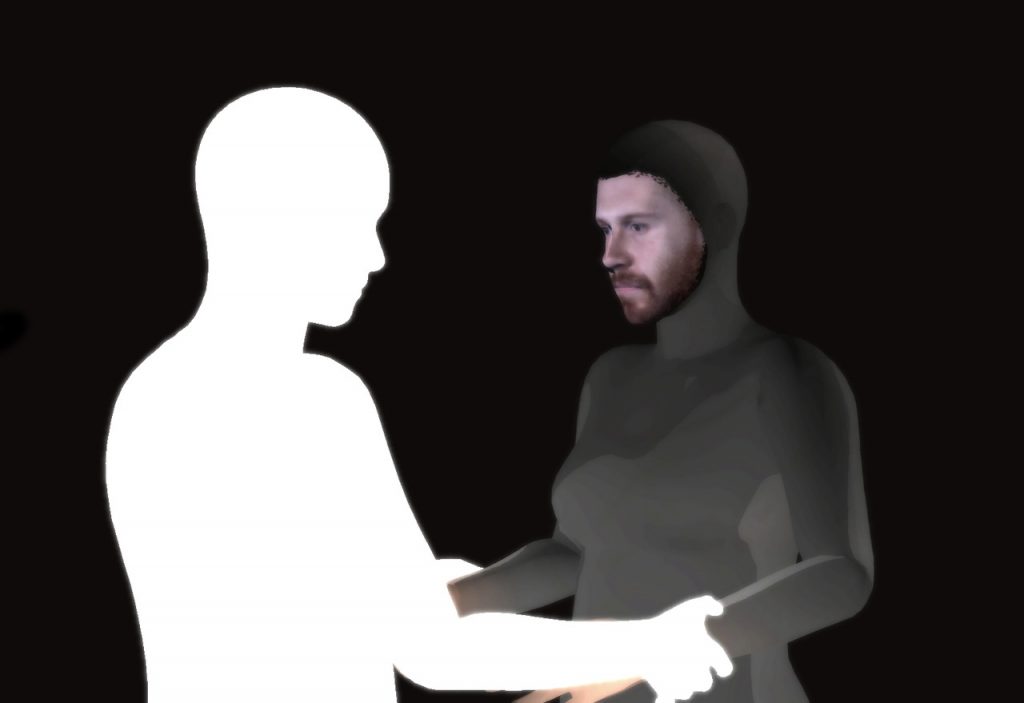
Captured is a narrative simulation about social injustice where your digital double has a role to play. In the installation, people are captured as 3D Avatars who become actors in a scenario where individual freedom is taken over by collective instincts.
Team

Hanna Haaslahti is a Finnish media artist working with ideas from technological theater, expanded image and interaction. She holds MFA from Medialab in University of Arts and Design Helsinki (Aalto). Currently Hanna Haaslahti lives and works in Helsinki. She has been artist-in-residence at MagicMediaLab, Brussels (2000), Nifca NewMediaAir, St.Petersburg (2003), Cité International des Arts, Paris (2008) and SculptureShock organized by Royal British Society of Sculptors, London (2015). She has received honorary mention at Vida 6.0 Art and artificial life-competition (2003) and was selected in 50 best category in ZKM Medien Kunst Preis (2003). She has received the most prestigious Finnish media art award, AVEK-award (2005).

Marko Tandefelt is a Helsinki based concept designer, educator and musician with extensive experience in art, design, media and technology fields. Among his interests are: Concept design, sensorbased interface prototyping, immersive multisensory cinema, and experimental visualization systems.
Marko has lived in New York for 20+ years, working at companies such as NEC R&D Labs, ESIDesign, Antennadesig and the Finnish Cultural Institute. During 2007-2015 Marko worked as the Director of Technology & Research/Senior Technology Manager at Eyebeam Art & Technology Center. Marko taught Masters Thesis courses at Parsons School of Design MFADT program in New York from 2001 til 2016.
In his native Helsinki Finland, Marko has worked since 2016 as a Technology Consultant and Producer in various interactive projects, including Hanna Haaslahti’s realtime 3D Body scanning installation system “Captured”. Marko works currently at Kunstventures as a media art producer, concept designer and prototyper.
Marko holds a B.M. degree Summa Cum Laude in Music Technology from NYU, and a Master’s degree from NYU Tisch School of the Arts Film & TV School Interactive Telecommunications Program ITP. He is a longtime member of ACM, AES, IEEE, SIGGRAPH, and SMPTE, and has worked as a paper reader and jury member for SIGGRAPH and ACE conferences.
Enactive VR research project “The State of Darkness” – ICIDS2018 Dublin
In the VR-mediated experience of the State of Darkness the participant will meet face-to-face with a humanlike artificial character in immersive narrative context. See ICIDS2018 Art Expo catalogue here
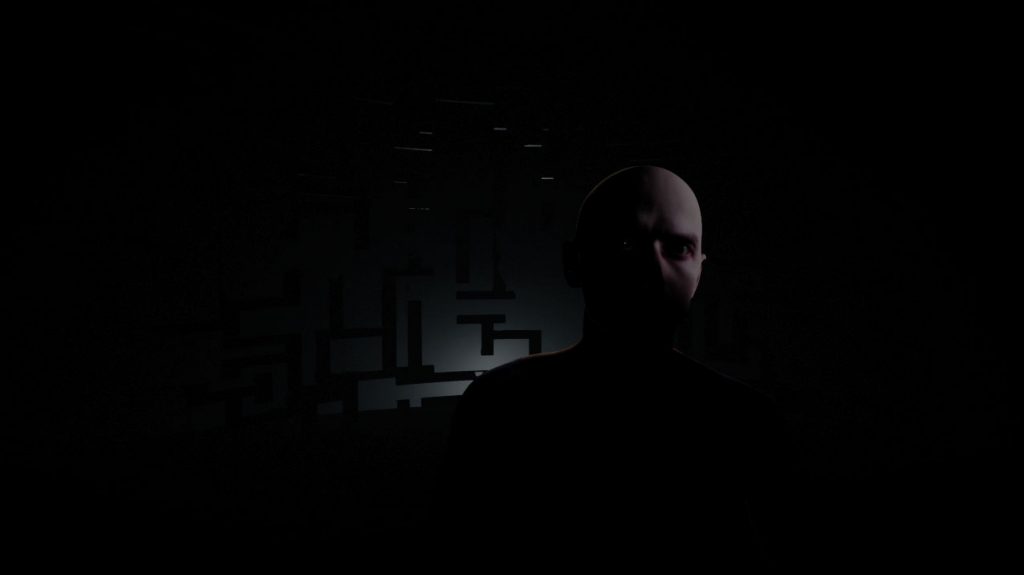
Human mind and culture rely on narratives people live by every day, narratives they tell to one another, narratives that allow them to learn from others, for instance, in movies, books, or social media. Yet, the State of Darkness connects the notion of non-human narratives to the stories experienced by our virtual character, Adam B. Trained by an exhaustive range of human facial repertoire, Adam B has gained access to control his facial expressions when encountering with humans.
Our concept builds on the idea of a symbiotic interactive co-presence of a human and non-human. Adam B will be experiencing his own non-human narrative that draws to some extent from the behavior of the participant, yet driven mainly by Adam B’s own life story hidden from the participant, emerging within the complexity of Adam B’s algorithmic mind. The State of Darkness is an art installation where human and non-human narratives coexist, the first experienced and lived-by our participant and the latter experienced by our artificial character Adam B, as they meet face-to-face, embedded in the narrative world of the State of Darkness.
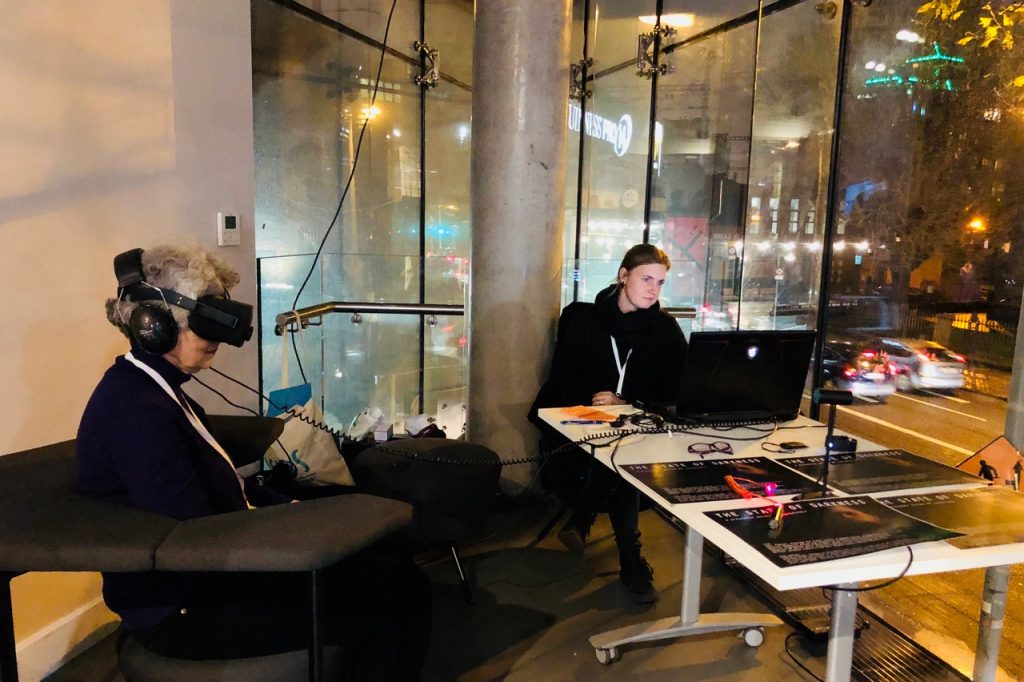

Above: Janet H. Murray meeting face-to-face our Adam B. at ICIDS2018 Art Expo, Trinity College Science Gallery, Dublin (Nov 5)

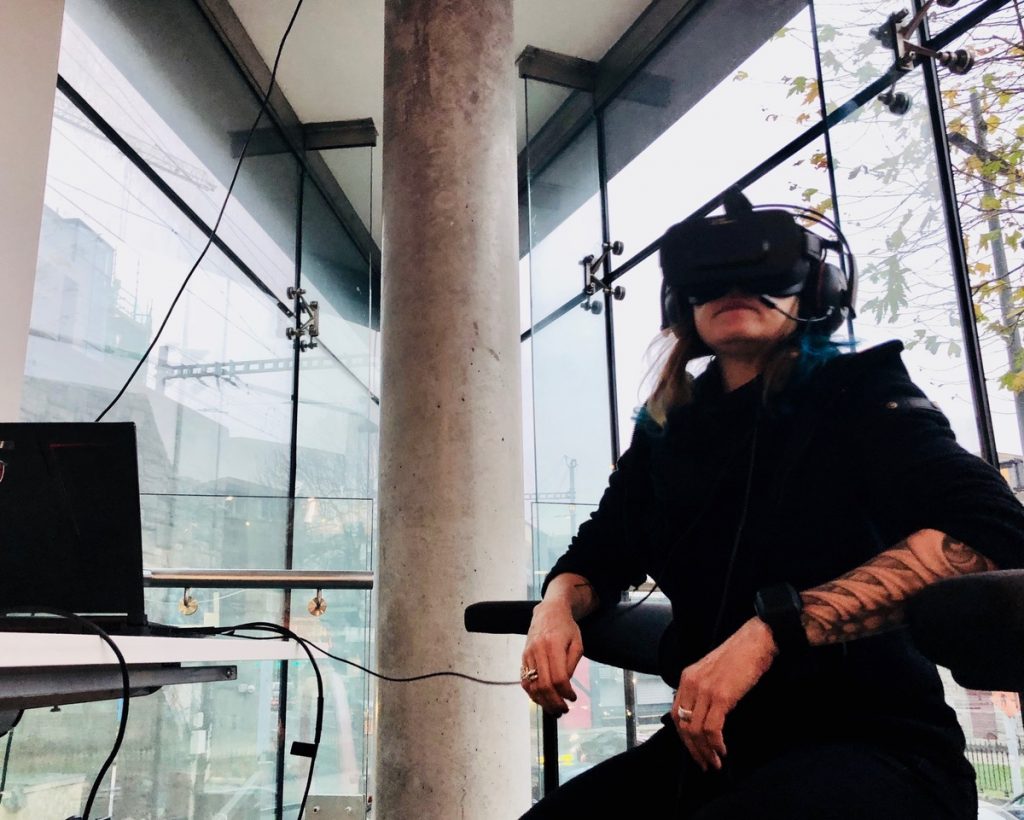
Image above: Enactive Scenographer Tanja Bastamow testing Installation at ICIDS2018 Trinity College, Science Gallery, a day before opening of Art Exhibition Dec 5.
Team
Idea, Concept, Director Pia Tikka; Script & Dramaturgical supervision Eeva R Tikka; Enactive Character design and production pipeline design Victor Pardinho; Enactive Scenography Tanja Bastamow; Sound design Can Uzer; Sound design II Iga Gerolin; Technical 3D Artist Maija Paavola; Symbiotic Creativity Ilkka Kosunen; Machine learning consultation Paul Wagner; Unreal engine consultation Ats Kurvet.
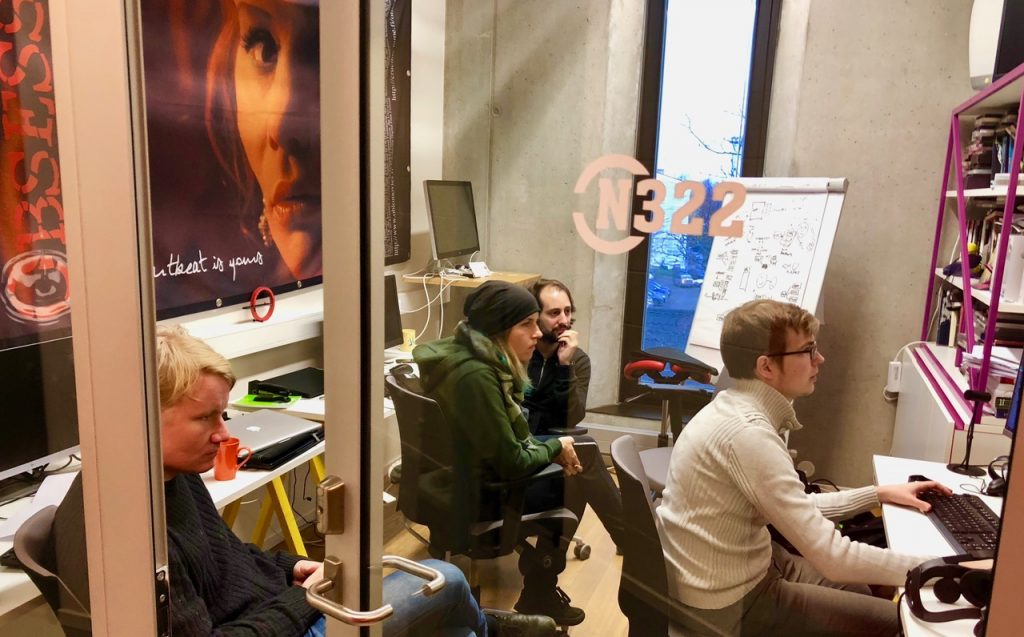

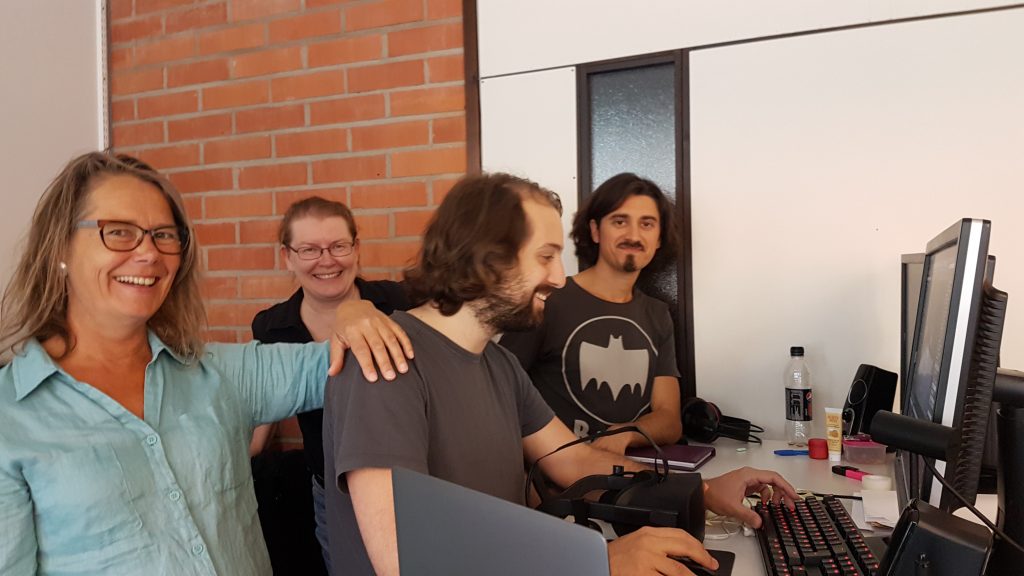
Team funding
Finnish Cultural Foundation Huhtamäki Fund; Virtual Cinema Lab Aalto University School of ARTS, ; Digidemo Promotion Center of Audiovisual Culture with Oblomovies Oy; VR equipment by Creative Lab, the Center of Excellence in Media Innovation and Digital Culture & Empatica4 biotracking by Digital Technology Insitute, Tallinn University; Tikka & Kosunen: EU Mobilitas Pluss Top Researcher Grant (2017-2022), Estonian Research Council in association with Tallinn University.
For more information, contact: piatikka@tlu.ee
The International Conference on Interactive Digital Storytelling ICIDS 2018 5-8 December 2018, Trinity College Dublin, Ireland. The State of Darkness VR-installation premiered in the ICIDS 2018 Art Exhibition, a platform for artists to explore digital media for interactive storytelling from the perspective of a particular curatorial theme: Non- Human Narratives. See https://icids2018.scss.tcd.ie
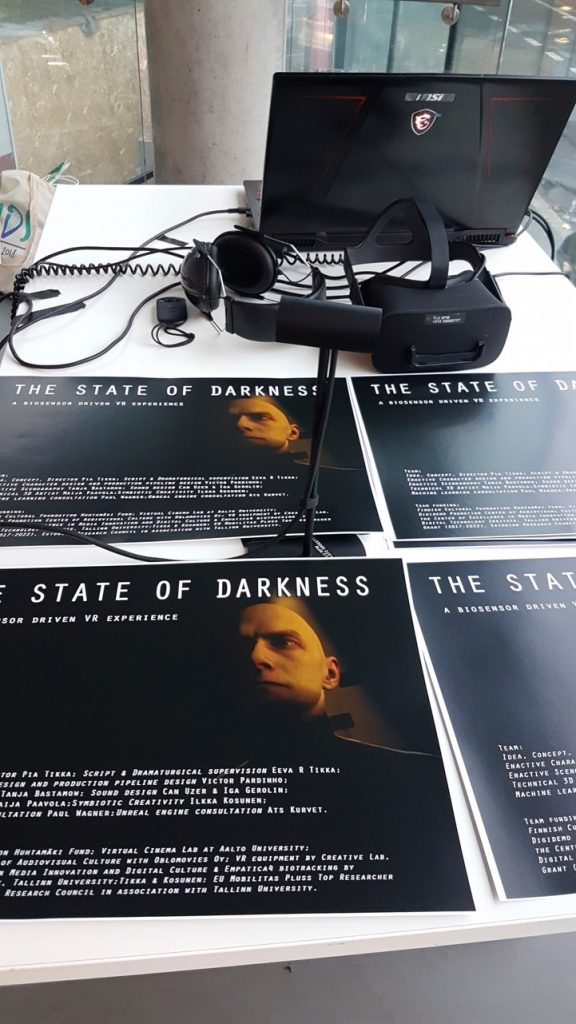
Neuroadaptive dance project “Trisolde”
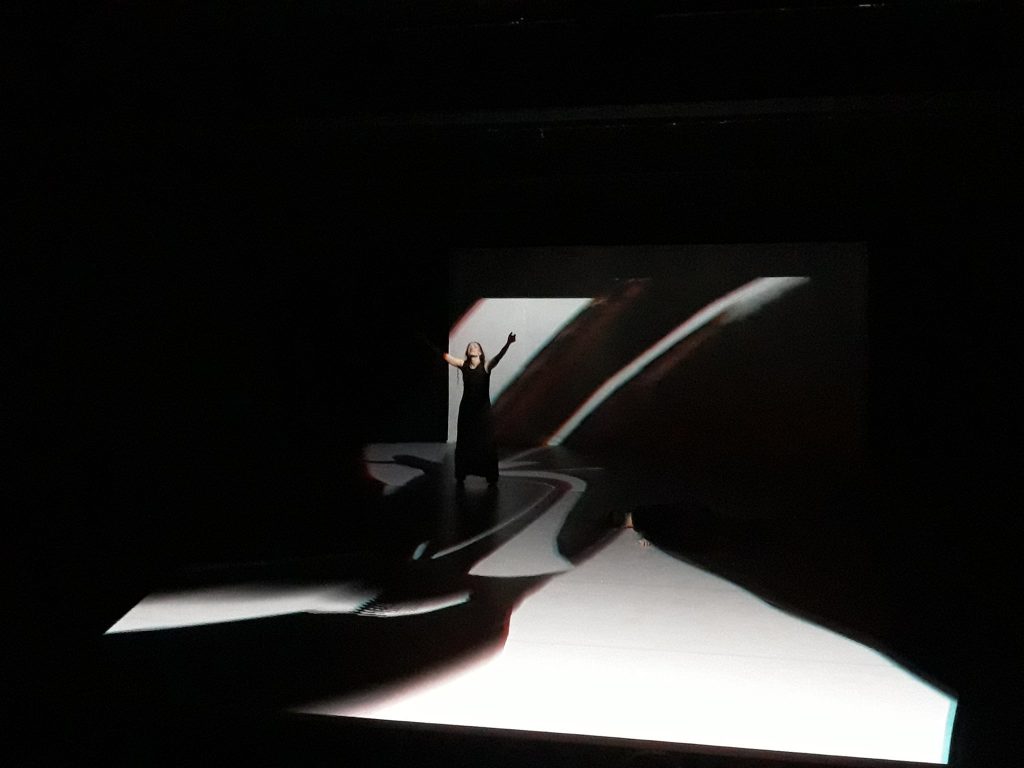
TRISOLDE – Neuroadaptive Gesamtkunstwerk: The Biocybernetic Symbiosis of Tristan and Isolde”
Exploring the final frontier of human-computer interaction with a neuroadaptive opera…performed by the audience, dancers and computational creativity .
Team of “TRISOLDE” (Tiina Ollesk, Simo Kruusement, Renee Nõmmik, Ilkka Kosunen, Hans-Günther Lock, Giovanni Albini) performed in Festival “IndepenDance” in Göteborg, nov 29 and Dec 2, 2019.
A symbiotic dance version of Wagner´s “Tristan and Isolde” where dancers are controlling the music via body movements and implicit psychophysiological signals. This work explores the next step in this coming-together of man and machine: the symbiotic interaction paradigm where the computer can automatically sense the cognitive and affective state of the user and adapt appropriately in real-time. It brings together many exciting fields of research from computational creativity to physiological computing. To measure audience and to use the audience’s reactions to module the orchestra is new way of doing “participatory theatre” where audience becomes part of the performance.
“Tristan and Isolde” is widely considered both as one of the greatest operas of all time as well as beginning of modernism in music, introducing techniques such as chromaticism dissonance and even atonality. It has sometimes been described as a “symphony with words”; the opera lacks major stage action, large choruses or wide range of characters. Most of the “action” in the opera happens inside the heads of Tristan and Isolde. This provides amazing possibilities for a biocybernetic system: I this case, Tristan and Isolde will communicate both explicitly (through movement of the dancers) but also implicitly via the measured psychophysiological signals.
Dance artists: Tiina Ollesk, Simo Kruusement
Choreographer-director: Renee Nõmmik
Dramaturgy and science of biocybernetic symbiosis: Ilkka Kosunen
Composers for interactive audio media: Giovanni Albini, Hans-Gunter Lock
Video interaction: Valentin Siltsenko
Duration: 40’
This performance is supported by: The Cultural Endowment of Estonia, and Enactive Virtuality Lab and Digital Technology Insitute (biosensors), Tallinn University.
Presentation of project: November 29th-30th and December 1st, 2018 at 3:e Våningen Göteborg (Sweden) at festival Independance. The event is dedicated to the centenary of the Republic of Estonia and supported by program “Estonia100-EV100”.
PREMIER IN TALLINN FEBRUARY 2019 (see more Fine 5 Theater)
Neurocinematics @ the Worlding the Brain Conference, Aarhus University
Enactive Virtuality Lab presented the collaborative research with the Brain and Mind Lab of the Aalto School of Science at the Worlding the Brain Conference in Aarhus University, Nov 27-29.
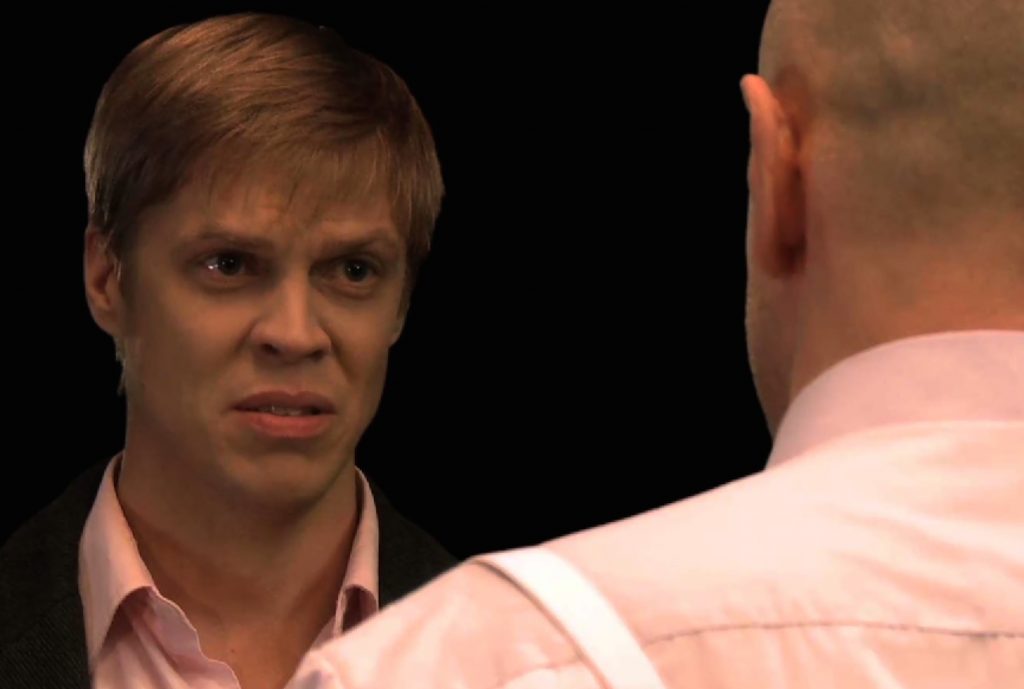
TITLE: Narrative priming of moral judgments in film viewing
Authors: Pia Tikka, Jenni Hannukainen, Tommi Himberg, and Mikko Sams
The Booth @ Worlding the Brain conference in Aarhus Uni
The Booth
Due to on-going experiments more details added about this art/science project only after the experimental data collection has been completed. Our presentation in Aarhus University Worlding the Brain Conference, 27–29 Nov, 2018, showed initial findings.
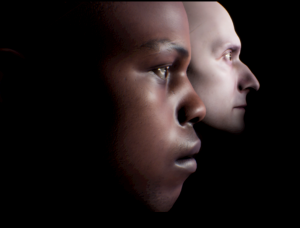
Team: Pia Tikka, Ilkka Kosunen, Lynda Joy Gerry, Eeva R Tikka, Victor Pardinho, Can Uzer, Angela Kondinska, Michael Becken & Ben Ighoyota Ajenaghughrure, with others.
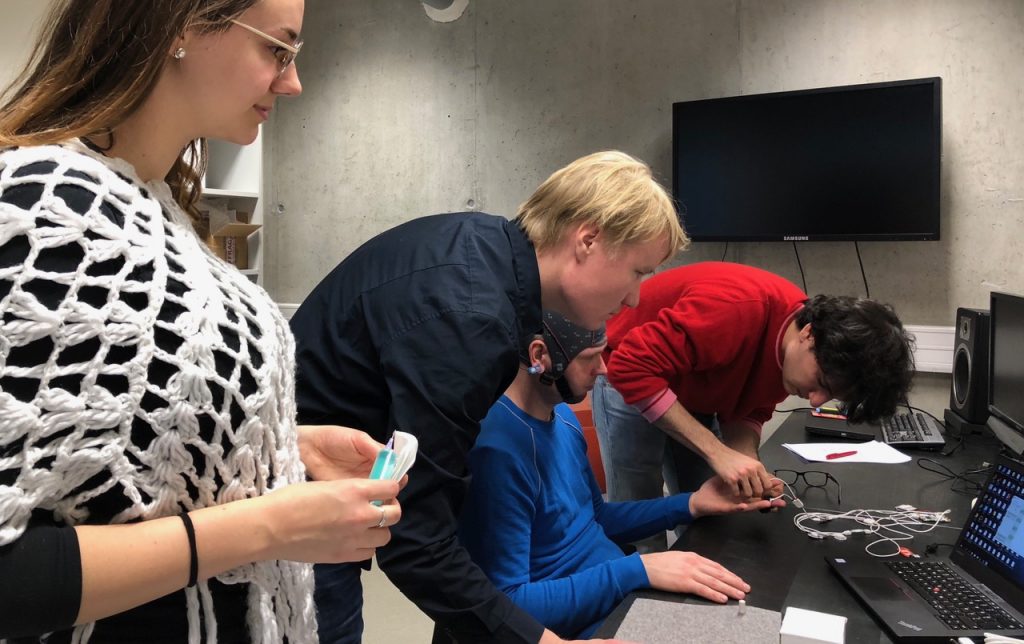
Finnish Cultural Foundation Huhtamäki Fund; Virtual Cinema Lab Aalto University School of ARTS; BioLab by Digital Technology Insitute, Tallinn University; Tikka & Kosunen: EU Mobilitas Pluss Top Researcher Grant (2017-2022), Estonian Research Council in association with Tallinn University.
Neurocinematic film “The Queen” – collaboration with Aalto Behavioral Lab
Enactive Virtuality Lab is collaborating with the Brain and Mind Lab of the Aalto School of Science, studying how narrative priming affects the viewer’s narrative story construction. Study on-going.
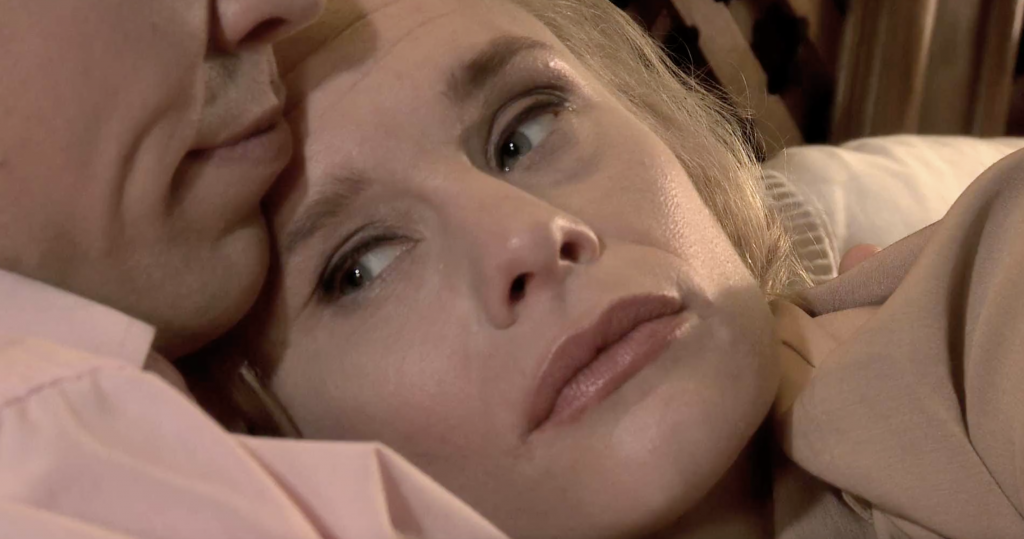
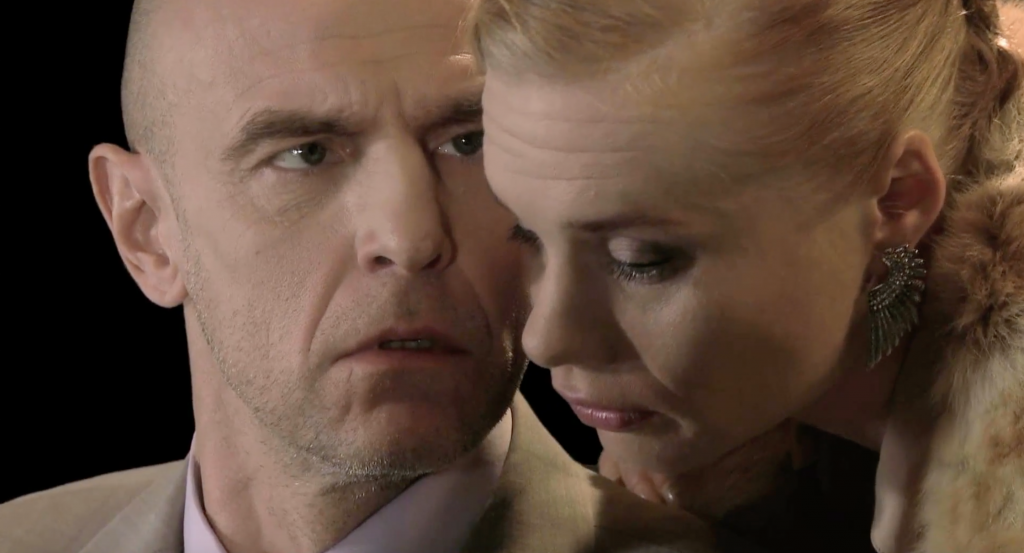

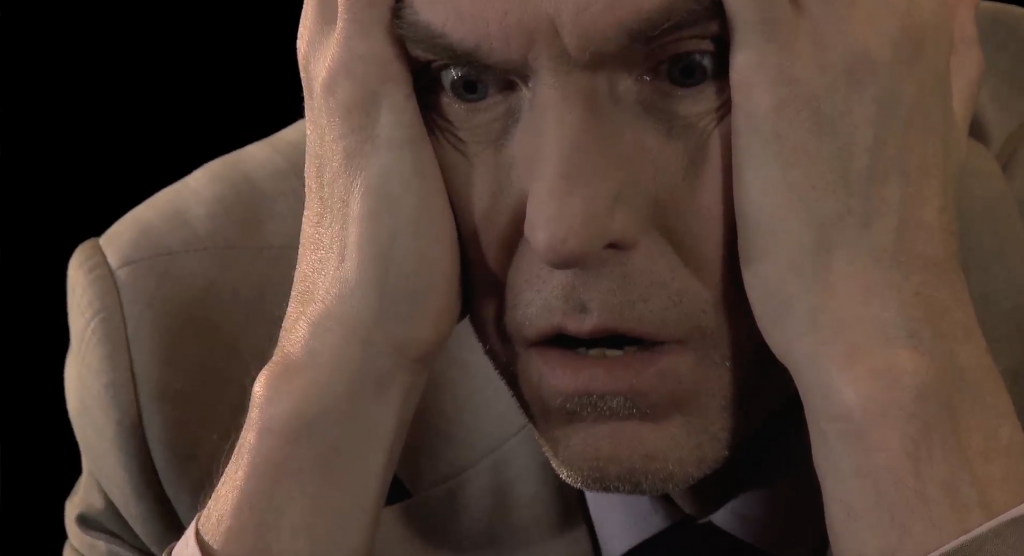
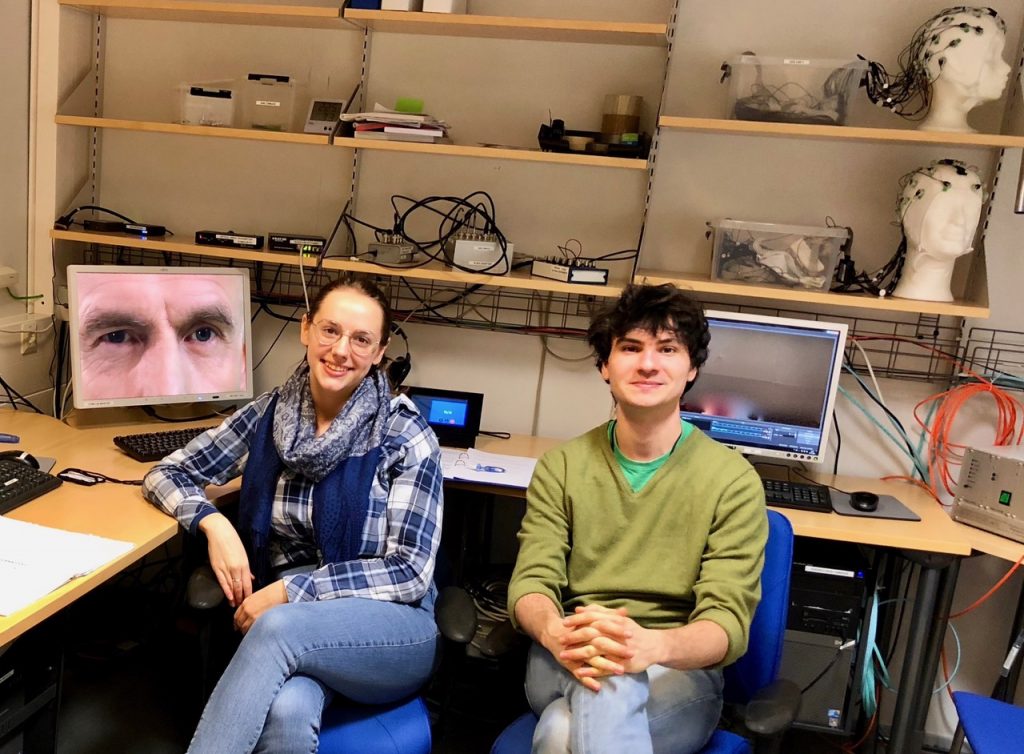
Talking about AI & MEDIA with ACE Producers

EEVR meet-up in Tartu
Pia Tikka and Victor Pardinho (video) presenting the latest state of Enactive Avatar pipeline at the meeting of Estonian VR community in Tartu University, Oct 6, 2018.
Conference presentation @Virtual Reality as a Transformative Technology to Develop Empathy June 20
A video conference presentation at the 1st “Virtual Reality as a Transformative Technology to Develop Empathy” Conference, organised by the “empathic Reactive MediaLab Coalition” (eRMLab Coalition) and EmpaticaXR research group.
Lynda Joy Gerry: Envisioning Future Technology for Compassion Cultivation
Experiments in cognitive neuroscience have recently dissociated neural pathways underpinning the experience of empathy from that of compassion. Namely, whereas the experience of empathy involves neural activations regarding an affective pain resonance with the distress or suffering of the target, compassion is correlated to reward centers and positive affect regions of the brain. The import of this finding is that empathy may in some instances lead to a withdrawal reflex if there is excessive sharing of distress with the target, whereas compassion appears to involve a care for the welfare of another and an approach motivation. Within the last five years, virtual environments (VEs) have been increasingly researched and developed towards the goal of enhancing users’ social intelligence, self-compassion, positive attitudes towards out-groups, and empathy. However, most of these VEs do not help the user to become more aware of his or her own emotional and psychological states in response to another person or persons, arguably a crucial step in the recovery from empathic distress or over-arousal. Biofeedback training has also been used for improving social cognition skills, but only a few projects have incorporated biofeedback into empathy-enhancing virtual environments. Recovery from empathic distress as a skill trained through biofeedback VEs could enhance interpersonal connectedness, quality of life, and social cohesion.
